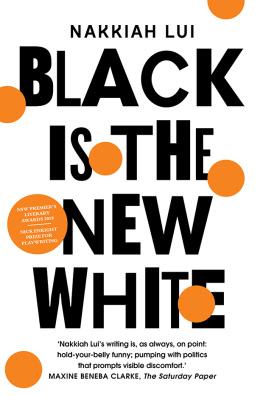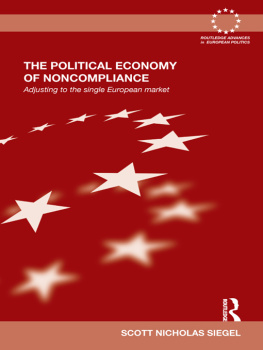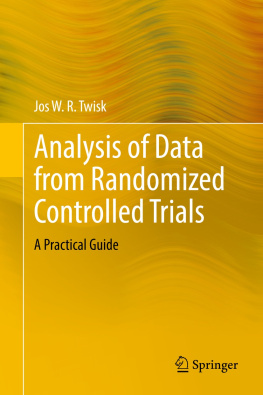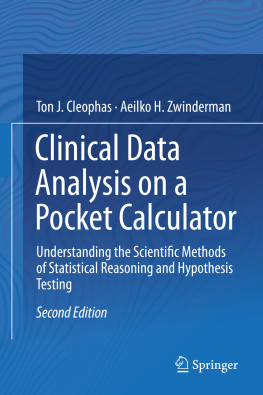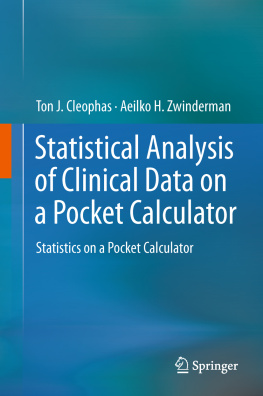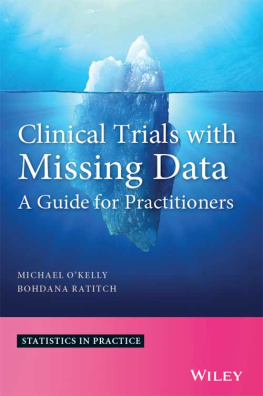Lui - Binary Data Analysis of Randomized Clinical Trials with Noncompliance
Here you can read online Lui - Binary Data Analysis of Randomized Clinical Trials with Noncompliance full text of the book (entire story) in english for free. Download pdf and epub, get meaning, cover and reviews about this ebook. City: Chichester, year: 2011, publisher: John Wiley & Sons Ltd, genre: Home and family. Description of the work, (preface) as well as reviews are available. Best literature library LitArk.com created for fans of good reading and offers a wide selection of genres:
Romance novel
Science fiction
Adventure
Detective
Science
History
Home and family
Prose
Art
Politics
Computer
Non-fiction
Religion
Business
Children
Humor
Choose a favorite category and find really read worthwhile books. Enjoy immersion in the world of imagination, feel the emotions of the characters or learn something new for yourself, make an fascinating discovery.

- Book:Binary Data Analysis of Randomized Clinical Trials with Noncompliance
- Author:
- Publisher:John Wiley & Sons Ltd
- Genre:
- Year:2011
- City:Chichester
- Rating:5 / 5
- Favourites:Add to favourites
- Your mark:
- 100
- 1
- 2
- 3
- 4
- 5
Binary Data Analysis of Randomized Clinical Trials with Noncompliance: summary, description and annotation
We offer to read an annotation, description, summary or preface (depends on what the author of the book "Binary Data Analysis of Randomized Clinical Trials with Noncompliance" wrote himself). If you haven't found the necessary information about the book — write in the comments, we will try to find it.
Lui: author's other books
Who wrote Binary Data Analysis of Randomized Clinical Trials with Noncompliance? Find out the surname, the name of the author of the book and a list of all author's works by series.
Binary Data Analysis of Randomized Clinical Trials with Noncompliance — read online for free the complete book (whole text) full work
Below is the text of the book, divided by pages. System saving the place of the last page read, allows you to conveniently read the book "Binary Data Analysis of Randomized Clinical Trials with Noncompliance" online for free, without having to search again every time where you left off. Put a bookmark, and you can go to the page where you finished reading at any time.
Font size:
Interval:
Bookmark:
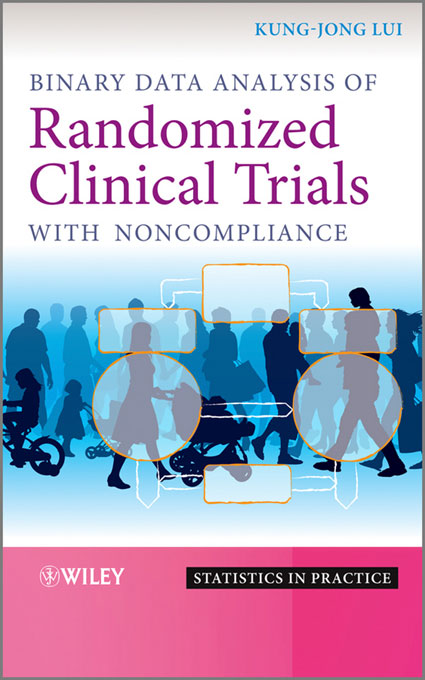
Statistics in Practice
Series Advisors
Human and Biological Sciences
Stephen Senn
University of Glasgow, UK
Earth and Environmental Sciences
Marian Scott
University of Glasgow, UK
Industry, Commerce and Finance
Wolfgang Jank
University of Maryland, USA
Statistics in Practice is an important international series of texts which provide detailed coverage of statistical concepts, methods and worked case studies in specific fields of investigation and study.
With sound motivation and many worked practical examples, the books show in down-to-earth terms how to select and use an appropriate range of statistical techniques in a particular practical field within each title's special topic area.
The books provide statistical support for professionals and research workers across a range of employment fields and research environments. Subject areas covered include medicine and pharmaceutics; industry, finance and commerce; public services; the earth and environmental sciences, and so on.
The books also provide support to students studying statistical courses applied to the above areas. The demand for graduates to be equipped for the work environment has led to such courses becoming increasingly prevalent at universities and colleges. It is our aim to present judiciously chosen and well-written workbooks to meet everyday practical needs. Feedback of views from readers will be most valuable to monitor the success of this aim.
A complete list of titles in this series appears at the end of the volume.
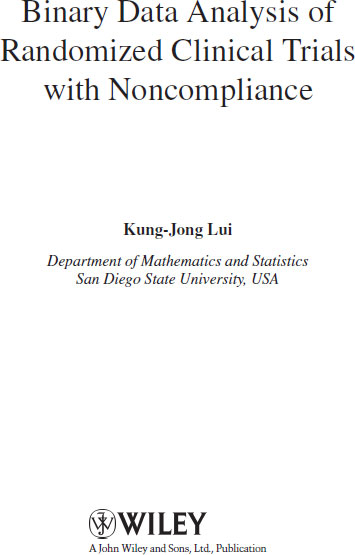
This edition first published 2011
2011 John Wiley & Sons, Ltd
Registered office
John Wiley & Sons Ltd, The Atrium, Southern Gate, Chichester, West Sussex, PO19 8SQ, United Kingdom
For details of our global editorial offices, for customer services and for information about how to apply for permission to reuse the copyright material in this book please see our website at www.wiley.com .
The right of the author to be identified as the author of this work has been asserted in accordance with the Copyright, Designs and Patents Act 1988.
All rights reserved. No part of this publication may be reproduced, stored in a retrieval system, or transmitted, in any form or by any means, electronic, mechanical, photocopying, recording or otherwise, except as permitted by the UK Copyright, Designs and Patents Act 1988, without the prior permission of the publisher.
Wiley also publishes its books in a variety of electronic formats. Some content that appears in print may not be available in electronic books.
Designations used by companies to distinguish their products are often claimed as trademarks. All brand names and product names used in this book are trade names, service marks, trademarks or registered trademarks of their respective owners. The publisher is not associated with any product or vendor mentioned in this book. This publication is designed to provide accurate and authoritative information in regard to the subject matter covered. It is sold on the understanding that the publisher is not engaged in rendering professional services. If professional advice or other expert assistance is required, the services of a competent professional should be sought.
Library of Congress Cataloging-in-Publication Data
Lui, Kung-Jong, author.
Binary data analysis of randomized clinical trials with noncompliance/Kung-Jong Lui, Department of Mathematics and Statistics, San Diego State University, USA.
p. ; cm.
Includes bibliographical references and index.
ISBN 978-0-470-66095-9 (cloth) ISBN 978-1-119-99160-1 (epdf) ISBN 978-1-119-99161-8 (obook) ISBN 978-1-119-99390-2 (epub) ISBN 978-1-119-99391-9 (mobi)
1. Clinical trialsStatistical methods. 2. DrugsTestingStatistical methods. I. Title.
[DNLM: 1. Randomized Controlled Trials as Topicmethods. 2. Medication Adherence. 3. Statistics as Topicmethods. QV 771]
RM301.27.L85 2011
615.5072$$4dc22
2010051072
A catalogue record for this book is available from the British Library.
Print ISBN: 978-0-470-66095-9
ePDF ISBN: 978-1-119-99160-1
oBook ISBN: 978-1-119-99161-8
ePub ISBN: 978-1-119-99390-2
Mobi ISBN: 978-1-119-99391-9
Dedicated to
Professors William G. Cumberland and Abdelmonem A. Afifi at UCLA, as well as Professor Daniel McGee at Florida State University
Preface
In a randomized clinical trial (RCT), it is quite common to encounter patients who do not comply with their assigned treatment due to ethical reasons, patient's decision or the feature of a study design (such as pre-randomized consent designs). Since noncompliance often occurs non-randomly, the commonly-used subgroup analyses, including as-treated (AT) analysis and as-protocol (AP) analysis, are well known to produce a possibly biased inference of treatment efficacy due to the incomparability of the underlying prognostic conditions for patients between two comparison groups. To alleviate this concern, the intent-to-treat (ITT) (or as-randomized (AR)) analysis has been often suggested for a RCT with noncompliance. However, the ITT analysis estimates the programmatic effectiveness rather than the treatment efficacy. Although ITT analysis may provide us with unbiased test for assessing the superiority of an experimental treatment to a standard treatment, the ITT analysis tends to underestimate the relative treatment effect in the presence of noncompliance under certain commonly-assumed conditions. Thus, how to assess the treatment efficacy in a RCT with noncompliance becomes practically useful and important.
The analysis of data for a RCT with noncompliance is generally quite complicated even for the simplest case of a simple noncompliance RCT, in which only patients assigned to the experimental treatment can have access to the experimental treatment. Furthermore, the frequent involvement of sophisticated numerical iterative procedures based on likelihoods to obtain parameter estimates makes this topic even more challenging and difficult for many clinicians and data analysts to appreciate. This book is to focus attention on the level which clinicians with one year of solid training in biostatistics can comprehend, and provides readers with a simple, systematic, and organized approach to study treatment effect for a RCT with noncompliance when the patient response is dichotomous and the noncompliance status is all-or-none in a variety of situations. This book adopts an instructive and easily-understood approach by using contingency tables to explicitly lay down the latent probability structure of observed data so that readers can easily visualize the logics and the ideas behind the development of the proposed test procedures and estimators in a one unified model frame. By contrast, when using the proportion difference (PD) to measure the relative treatment effect, we assume the structural risk additive model based on the model-based approach. While using the proportion ratio (PR) to measure the relative treatment effect, we assume the structural risk multiplicative model. Furthermore, this book presents all test procedures, estimators and sample size calculation procedures in closed forms. Readers may simply use a hand calculator to calculate all the test statistics, interval estimators or sample size calculation formulae without the need of employing any iterative numerical procedures in the situations considered here. For the easy access of the particular topic of reader's interest, this book is written in such a constructive structure that the underlying assumptions, notation, test procedures and formulae in each chapter are self-contained. Readers may directly refer to the particular chapter without the need of reading the details in all the preceding chapters, although I must admit that some assumptions, definitions in notation, and important notes are repeated to avoid confusions in narrative or ambiguities in formulae and findings. Through some real-life examples and computer-simulated data, readers can appreciate the practical usefulness of the test procedures and estimators discussed in this book. The exercises given at the end of each chapter can further help readers better understand the underlying assumptions, the theory and limitations of the proposed test procedures and estimators, as well as other relevant issues and extensions. To facilitate the use of sample size determination presented here, we include in Appendix SAS programs that can be easily modified by readers to accommodate the situations in which they are interested. Despite the book generally adopting the principal stratification approach to account for the effect due to noncompliance, this book also briefly addresses use of the model-based approach (which is related to a quite general class of the structural mean models (SMMs) proposed elsewhere) and notes the relations of parameters and estimators between these two approaches. Because the discussion on the SMM is truly beyond the modest scope of this book, the SMM is not discussed in the book. Readers who are interested in this area may begin with reading a few key references regarding the SMMs cited here.
Font size:
Interval:
Bookmark:
Similar books «Binary Data Analysis of Randomized Clinical Trials with Noncompliance»
Look at similar books to Binary Data Analysis of Randomized Clinical Trials with Noncompliance. We have selected literature similar in name and meaning in the hope of providing readers with more options to find new, interesting, not yet read works.
Discussion, reviews of the book Binary Data Analysis of Randomized Clinical Trials with Noncompliance and just readers' own opinions. Leave your comments, write what you think about the work, its meaning or the main characters. Specify what exactly you liked and what you didn't like, and why you think so.

